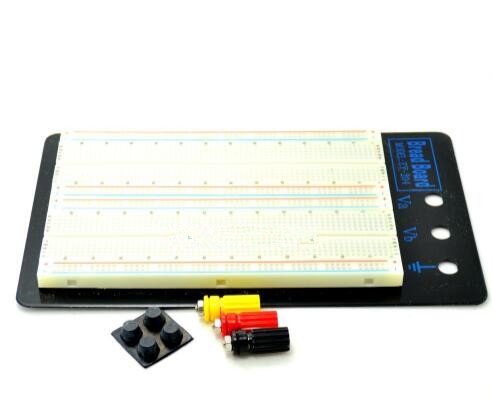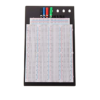Product Overview
The 3220 Points Solderless Breadboard is a high-quality prototyping board designed for easy and efficient circuit building without the need for soldering. With 3220 tie points, this breadboard provides ample space for complex circuit designs, making it ideal for electronics enthusiasts, students, and professionals. Its modular design allows for easy expansion, and its high-quality contacts ensure reliable connections for components.
Key Features:
- Large Prototyping Area: 3220 tie points for building complex circuits.
- Solderless Design: Easily insert and remove components without soldering.
- Expandable & Modular: Can be connected with additional breadboards for larger projects.
- High-Quality Contacts: Ensures secure and reliable connections.
- Compatible with Various Components: Works with Arduino, Raspberry Pi, microcontrollers, sensors, and ICs.
- Durable Construction: Made from high-quality plastic with a sturdy base.
Technical Specifications:
- Total Tie Points: 3220
- Sections: Power rails & main grid area
- Material: High-quality ABS plastic
- Connectivity: Spring-loaded contacts for secure connections
- Compatibility: Suitable for Arduino, Raspberry Pi, sensors, ICs, and other electronic components
Applications:
- Prototyping Electronic Circuits for Arduino, microcontrollers, and other DIY projects.
- Educational Use: Great for students learning circuit design.
- Testing and Debugging: Allows easy modifications without permanent connections.
- STEM & Robotics Projects: Used for rapid prototyping in robotics and automation.
Why Choose This Breadboard?
The 3220 Points Solderless Breadboard is perfect for engineers, students, and hobbyists who need a reliable, reusable, and spacious platform for designing and testing circuits without soldering.
Only logged in customers who have purchased this product may leave a review.














Reviews
There are no reviews yet.